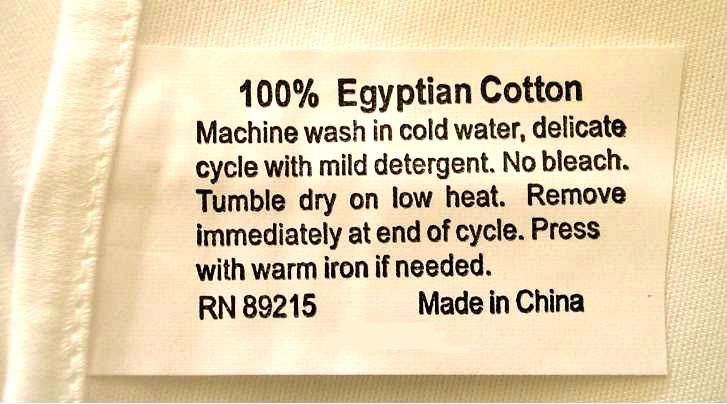
Shortly after the crisis in Egypt began, I changed the sheets on the bed and noticed this tag which prompted this post.
What is Egyptian Cotton?
Egyptian cotton is "extra long staple" mostly made from a cotton plant called Gossypium barbadense or from Gossypium hirsutum, both native to America. It was believed to be derived from sea island cotton or by hybridization with Peruvian cotton. Its fiber length is around 1 3/8 inches. These plants were introduced to Egypt in the nineteenth century by Egypt's ruler, Mohammed Ali Pasha, who developed them as a cash crop to support his army. The plant is tropical and grows as a small, bushy tree requiring high humidity and rainfall. It contains the chemical gossypol, reducing its susceptibility to insect and fungal damage.
Cotton from Egyptian fibers is more breathable and becomes softer over time with use. It produces less lint and will not pill. This high-quality fiber is long and narrower than other cottons, allowing thread counts of up to 1,000 per square inch. This provides a lighter weight and extremely strong, long-lasting durability. Sheets made with Egyptian cotton can last forty or fifty years.
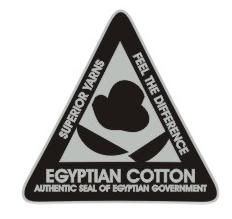
Look out for this Kite Mark as this is the ony guarantee that you will have that your products are 100% made from the best egyptian cotton yarns and made entirely in Egypt.
Cotton was first cultivated in the Old World 7,000 years ago, in the region of the northwestern part of the Indian subcontinent, which is today eastern Pakistan and northwestern India. Cotton has been spun, woven, and dyed since prehistoric times. It clothed the people of ancient India, Egypt, and China. Hundreds of years before the Christian era, cotton textiles were woven in India with matchless skill, and their use spread to the Mediterranean countries.
During the U.S. Civil War, with heavy European investments, Egyptian-grown cotton became a major alternate source for British textile mills. Egyptian cotton is more durable and softer than American Pima cotton, which is why it is more expensive. Pima cotton is American cotton that is grown in the southwestern states of the U.S.
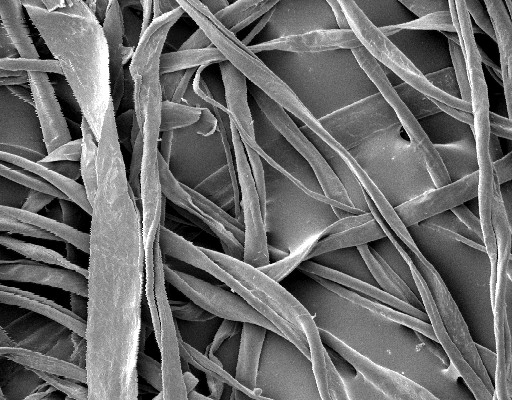
source: wikipedia
(Cotton fibers viewed under a scanning electron microscope)
In Egypt, the introduction in 1820 of long-staple cotton, transformed its agriculture into a cash-crop monoculture by 1900. The social effects of this were enormous: land ownership became concentrated and many foreigners arrived, shifting production towards international markets.
During the American Civil War, British and French traders invested heavily in cotton plantations and the Egyptian government of Viceroy Isma'il took out substantial loans from European bankers and stock exchanges. After the American Civil War ended in 1865, British and French traders abandoned Egyptian cotton and returned to cheap American exports, sending Egypt into a deficit spiral that led to the country declaring bankruptcy in 1876, a key factor behind Egypt's annexation by the British Empire in 1882.
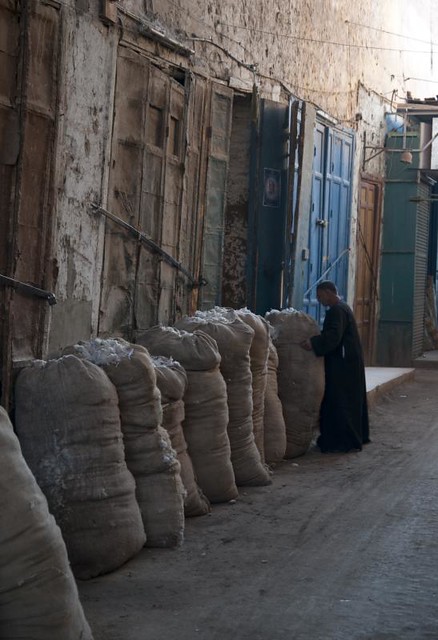
source: flickr
(Cotton in Bags on a street in Esna, Egypt)
As you can see by this next chart, Egypt does not rank in the top ten cotton producing nations of today:
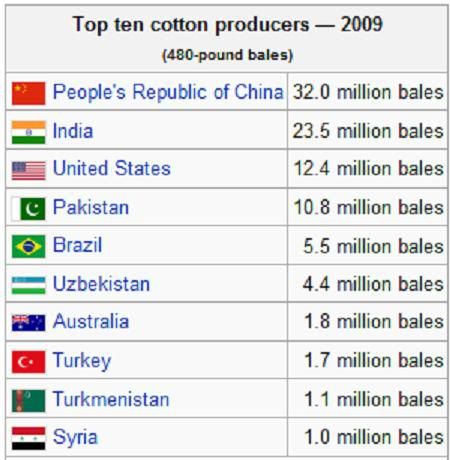
source: wiki/National Cotton Council of America
The flooding in Pakistan during the past growing season wiped out a large portion of the "Egyptian cotton" crop, where much of it is grown today, making it especially pricey, currently.
As a final note, the "Egyptian cotton" sheets which I purchased that were "made in China" are starting to pill, so they are obviously a "fraud". You get what you pay for.
K. McDonald